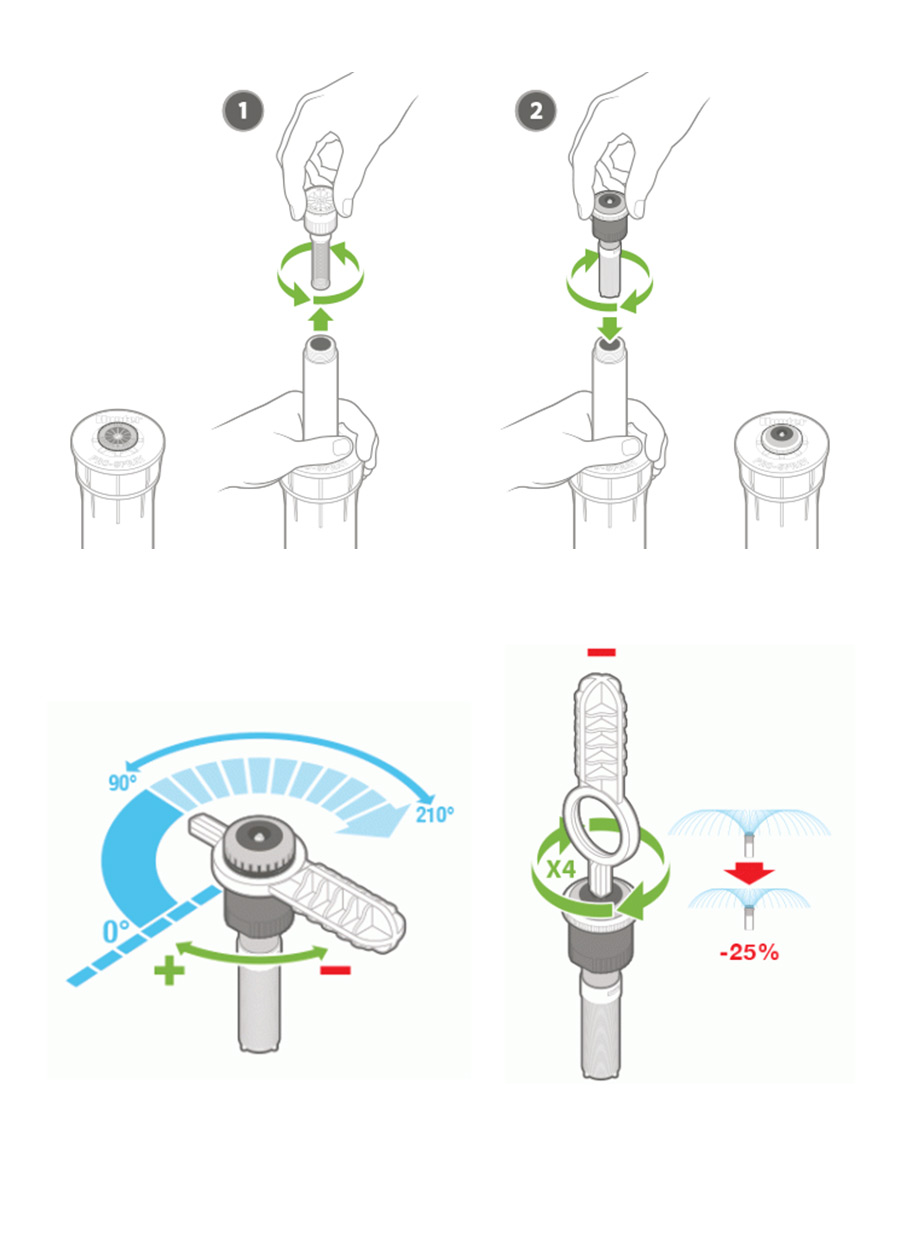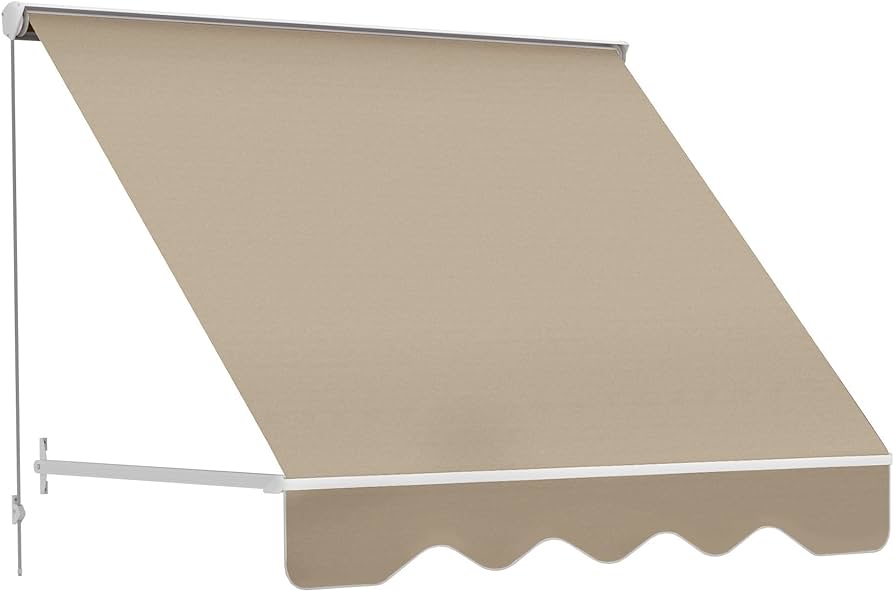To adjust an MP Rotator, turn the radius adjustment screw clockwise to decrease the radius and counterclockwise to increase it. The MP Rotator is a popular sprinkler nozzle that offers efficient water distribution and significant water savings compared to traditional spray heads.
However, to achieve optimal performance, it is essential to adjust the MP Rotator correctly. This article will guide you on how to adjust the MP Rotator to control the spray distance and pattern. By following the simple steps outlined here, you can ensure that your irrigation system delivers the right amount of water to your landscape, promoting healthy and thriving plants while conserving water.
Let’s dive into the details of adjusting the MP Rotator properly.

Credit: product-selection.grundfos.com
Understanding The Mp Rotator
If you’re a homeowner or a landscaper looking to improve the efficiency of your irrigation system, you may have come across the term MP Rotator. In this section, we’ll provide a comprehensive understanding of what an MP Rotator is, the advantages of using it, and how it works.
What Is An Mp Rotator?
An MP Rotator is a type of sprinkler nozzle that is designed to deliver water more efficiently, reducing water waste and ensuring uniform coverage. Unlike traditional spray nozzles that produce a mist-like spray, MP Rotators feature multiple rotating streams that distribute water more evenly.
These nozzles are versatile and can be used for both residential and commercial irrigation systems. MP Rotators are available in various models, offering different precipitation rates and throw distances to suit different landscape needs.
Advantages Of Using Mp Rotator
One of the primary advantages of using MP Rotators is their water-saving capabilities. By delivering water more effectively, these nozzles can help reduce water waste by up to 30% compared to traditional spray nozzles.
Additionally, MP Rotators provide a number of other benefits:
- They minimize overspray, preventing water from being wasted on sidewalks, driveways, and other non-landscaped areas.
- They reduce runoff and erosion by delivering water at a slower rate, allowing the soil to absorb moisture more effectively.
- MP Rotators offer excellent wind resistance and are less susceptible to misting and evaporation.
- These nozzles are highly efficient in slopes and areas with uneven terrain, as they minimize water runoff and ensure even coverage.
How Does An Mp Rotator Work?
The unique design of MP Rotators enables them to deliver water in multiple, rotating streams. This rotating action helps to break up the water into droplets, reducing the chance of wind drift and improving penetration into the soil.
MP Rotators also have adjustable arc patterns, allowing you to customize the spray angle to match the shape and size of your specific landscape. This flexibility ensures that water is distributed precisely where it is needed, reducing overspray and improving water efficiency.
Furthermore, MP Rotators have interchangeable nozzles, which means you can easily adapt them to different precipitation rates and throw distances. This feature allows you to fine-tune your irrigation system and optimize water distribution for each specific zone in your landscape.
In summary, MP Rotators are a smart choice for achieving efficient and uniform irrigation. By understanding how they work and the advantages they offer, you can make informed decisions to improve the effectiveness of your irrigation system and contribute to water conservation.

Credit: www.hunterindustries.com
Signs That Adjustment Is Needed
Adjusting the Mp Rotator may be necessary if you notice signs such as uneven water distribution, overspray, or low pressure. Paying attention to these indicators and making necessary adjustments will help improve the performance of your irrigation system.
Uneven Water Distribution
If you notice areas in your lawn that are greener or drier than others, it could be a sign that the MP Rotator sprinkler heads need adjustment. Uneven water distribution can occur due to various factors, such as incorrect alignment, blocked nozzles, or worn-out parts. By addressing this issue, you can ensure that every corner of your lawn receives the right amount of water for optimal growth and health.
Overspray Or Underspray
Overspray or underspray are common problems you might encounter with your MP Rotator sprinkler system. Overspray occurs when the water sprays beyond the desired area, resulting in wastage and potential damage to nearby structures or plants. On the other hand, underspray refers to insufficient water coverage, leaving certain areas under-watered. These issues can be resolved by adjusting the MP Rotator heads, ensuring that the water is distributed evenly and accurately within the intended boundaries.
Clogged Or Damaged Nozzles
Clogged or damaged nozzles can significantly affect the performance of your MP Rotator sprinkler system. When the nozzles are clogged with dirt, debris, or mineral deposits, the water flow becomes restricted, resulting in irregular water distribution. Additionally, damaged nozzles can cause leaks or create inefficiencies in the water spray pattern. Regular inspection and cleaning of the nozzles will help maintain optimal performance and prevent any potential issues that may arise.
Step-by-step Guide To Adjusting The Mp Rotator
Adjusting your MP Rotator is an essential task to ensure optimal performance and water efficiency in your irrigation system. In this step-by-step guide, we will walk you through the process of inspecting the MP Rotator, adjusting the arc, adjusting the radius, and replacing nozzles if needed. By following these simple instructions, you can easily optimize the coverage and distribution of water in your landscape.
Inspecting The Mp Rotator
Before making any adjustments, it’s important to inspect the MP Rotator to identify any issues or damage that may affect its performance. Follow these steps to inspect the MP Rotator:
- Turn off the irrigation system and ensure the water flow has completely stopped.
- Remove the MP Rotator from its housing or nozzle socket.
- Check for any clogs, debris, or damage on the screen, nozzle, and body of the MP Rotator.
- If there are any clogs, clean them with a gentle bristle brush or replace the nozzle if it’s damaged.
- Reinsert the MP Rotator back into its housing or nozzle socket.
Adjusting The Arc
The arc refers to the angle at which the MP Rotator rotates to distribute water. Follow these steps to adjust the arc:
- Locate the arc adjustment screw on the top of the MP Rotator.
- Using a flathead screwdriver, turn the arc adjustment screw clockwise to decrease the arc angle or counterclockwise to increase it.
- Make small adjustments and test the rotation after each adjustment to ensure the desired coverage is achieved.
- Once the correct arc angle is set, tighten the arc adjustment screw to secure the position.
Adjusting The Radius
The radius refers to the distance at which the MP Rotator sprays water. Follow these steps to adjust the radius:
- Locate the radius adjustment screw on the side of the MP Rotator.
- Using a flathead screwdriver, turn the radius adjustment screw clockwise to decrease the radius or counterclockwise to increase it.
- Make small adjustments and observe the spray pattern after each adjustment to achieve the desired coverage.
- Once the desired radius is achieved, tighten the radius adjustment screw to lock the position.
Replacing Nozzles If Needed
If the MP Rotator is not providing adequate coverage or is damaged, you may need to replace the nozzle. Follow these steps to replace the nozzle:
- Turn off the irrigation system and ensure the water flow has completely stopped.
- Remove the MP Rotator from its housing or nozzle socket.
- Identify the nozzle type and size by referring to the markings on the nozzle.
- Obtain the correct replacement nozzle.
- Insert the replacement nozzle into the MP Rotator, ensuring it is securely in place.
- Reinsert the MP Rotator back into its housing or nozzle socket.
By following this step-by-step guide, you can effectively adjust your MP Rotator to optimize its performance and ensure even water distribution throughout your landscape. Regularly inspecting and maintaining your MP Rotator will help sustain the efficiency and effectiveness of your irrigation system.

Credit: www.amazon.in
Frequently Asked Questions On How To Adjust Mp Rotator
How Do I Adjust The Mp Rotator?
To adjust the MP Rotator, start by removing the nozzle. Then, using a small flathead screwdriver, turn the adjustment screw clockwise to increase the radius or counterclockwise to decrease it. Be sure to test the adjustments and fine-tune as needed for optimal coverage.
What Is The Recommended Radius For The Mp Rotator?
The recommended radius for the MP Rotator depends on factors such as water pressure and desired coverage. It is generally recommended to start with a radius of 8-12 feet and adjust as needed. Keep in mind that adjusting the radius may affect the precipitation rate, so make adjustments accordingly.
How Do I Adjust The Precipitation Rate Of The Mp Rotator?
To adjust the precipitation rate of the MP Rotator, you can adjust the radius and the flow rate. Increasing the radius will decrease the precipitation rate, while decreasing the radius will increase it. Adjusting the flow rate by increasing or decreasing the water pressure will also impact the precipitation rate.
Why Is My Mp Rotator Not Turning?
If your MP Rotator is not turning, there are a few possible causes. First, check if there is any debris blocking the nozzle or the gear mechanism. Clean or replace any clogged or damaged parts. Additionally, ensure that the water pressure is within the recommended range for the MP Rotator.
If the issue persists, consider contacting a professional for further assistance.
Conclusion
To sum it up, adjusting your Mp Rotator is crucial for maintaining a healthy and vibrant lawn. By following the step-by-step guide provided in this blog post, you can ensure that your sprinkler system is functioning optimally and delivering water precisely to where it’s needed.
Regular adjustments will not only save water but also promote the overall health and appearance of your lawn. So, go ahead and put these tips into action to achieve a beautiful and sustainable outdoor space. Happy gardening!


